VMware vSphere 6.5 is scheduled to reach end of general support 15 October 2022, referenced in the VMware Lifecycle Matrix. See also How to Install vSphere 7.0. Upgrade to vSphere 7 can be achieved directly from vSphere 6.5.0 and above, whereas vSphere 6.0 requires an intermediate upgrade to 6.5 or 6.7 first. For more information see the VMware Upgrade Matrix. Finally, the Windows vCenter Server is now depreciated and not available with vSphere 7.0.
VMware vCenter Server pools ESXi host resources to provide a rich feature set delivering high availability and fault tolerance to virtual machines. The vCenter Server is a centralised management application and can be deployed as a virtual appliance or Windows machine. This post walks through an upgrade of the vCenter Server Appliance from v5.5 or v6.0 to v6.5. See also vCenter Server Appliance 6.5 Install Guide, or Migrating Windows vCenter Server.
About VCSA
The VCSA is a pre-configured virtual appliance; as of v6.5 the operating environment is built on Project Photon OS 1.0. Since the OS has been developed by VMware it benefits from enhanced performance and boot times over the previous Linux based appliance. Furthermore the embedded Postgre database means VMware have full control of the software stack, resulting in significant optimisation for vSphere environments and quicker release of security patches and bug fixes. The VCSA scales up to 2000 hosts and 35,000 virtual machines.
In vSphere 6.0 the VCSA reached feature parity with its Windows counterpart, 6.5 begins to pave the way for VCSA to become the preferred deployment method for vCenter Server. One key addition is the inclusion of Update Manager bundled into the VCSA, as well as vCenter High Availability, Backup and Restore, and other features. The appliance also saves operating system license costs and is quicker and easier to deploy and patch.
Upgrading to VCSA 6.5 involves the deployment of a new appliance and migration of all configuration and historical data (optional) using the upgrade installer. The VCSA uses a temporary IP address during migration before switching to the IP and host name of the new VCSA, the old appliance is then powered off.
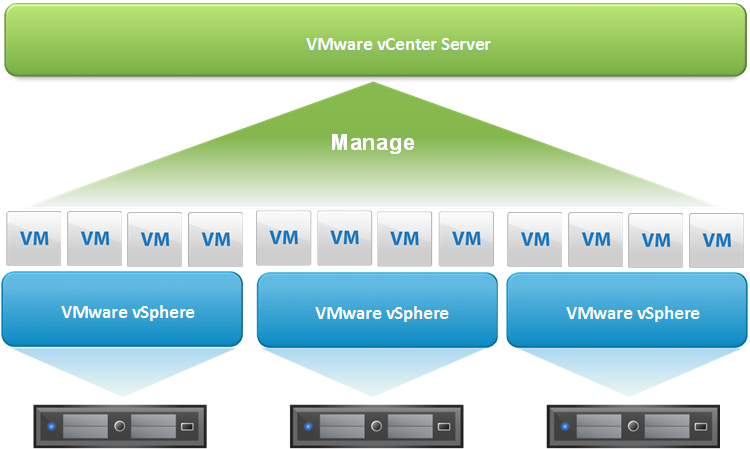
Software Considerations
- VCSA 6.5 must be deployed to an ESXi host running v5.5 or above. All hosts you intend to connect to vCenter Server 6.5 should also be running ESXi v5.5 or above.
- The VCSA to be upgraded can be either v5.5 or v6.0.
- VCSA 6.5 does not support the use of an external database. Where a system using an external database is upgraded, the data is imported into the internal Postgres database within VCSA 6.5.
- You must check compatibility of any third party products and plugins that might be used for backups, anti-virus, monitoring, etc. as these may need upgrading for use with vSphere 6.5.
- If you are unsure check the Product Interoperability Matrix.
Architectural Considerations
- From vSphere 6 onwards the Platform Services Controller (PSC) was introduced to the vSphere architecture. The PSC contains infrastructure services such as Single Sign On, Certificate Authority, licensing, etc. The PSC is deployed internally with vCenter Server or as an external component. Read more about the PSC in this KB.
- When implementing a new vSphere 6.5 environment you should plan your topology in accordance with the VMware vCenter Server and PSC Deployment Types. Larger environments may require an external PSC.
- When upgrading vCenter the deployment model already in place will be migrated, the upgrade supports different deployment topologies but can not make changes to the topology and SSO domain configuration.
- In this post we will be upgrading vCenter Server 6.0 using the embedded deployment model. If you are using an external deployment model the PSC appliance must be upgraded before the vCenter Server.
- Consider if the default self-signed certificates are sufficient or if you want to replace with custom CA or VMware CA signed certs, see Installing vCenter Internal CA signed SSL Certificates for more information.

Other Considerations
- VCSA 6.5 with embedded PSC requires the following hardware resources (disk can be thin provisioned)
- Tiny (up to 10 hosts, 100 VMs) – 2 CPUs, 10 GB RAM.
- Small (up to 100 hosts, 1000 VMs) – 4 CPUs, 16 GB RAM.
- Medium (up to 400 hosts, 4000 VMs) – 8 CPUs, 24 GB RAM.
- Large (up to 1000 hosts, 10,000 VMs) – 16 CPUs, 32 GB RAM.
- X-Large (up to 2000 hosts, 35,000 VMs) – 24 CPUs, 48 GB RAM – new to v6.5.
- Storage requirements for the smallest environments start at 250 GB and increase depending on your specific database requirements. See the Storage Requirements document for further details.
- Where the PSC is deployed as a separate appliance this requires 2 CPUs, 4 GB RAM, 60 GB disk.
- Environments with ESXi host(s) with more than 512 LUNs and 2048 paths should be sized large or x-large.
- The ESXi host on which you deploy the new appliance should not be in lockdown or maintenance mode.
- All vSphere components should be configured to use an NTP server. The installation can fail or the vCenter Server Appliance vpxd service may not be able to start if the clocks are unsynchronized.
- FQDN resolution should be in place when deploying vCenter Server.
- Review the list of Required Ports for vCenter Server and PSC.
- Official resources – vSphere 6.5 Documentation Centre, vSphere 6.5 Release Notes.
- Read the Important information before upgrading to vSphere 6.5 KB.
Installation
Download the VMware vCenter Server Appliance 6.5 ISO from VMware downloads: v6.5.0 | v6.5.0 U1.
Unlike the Windows vCenter installer, which hasn’t changed much in v6.5; the VCSA installer has had a complete overhaul. You’ll notice straight away that the GUI is much cleaner, and multiple deployment options (install, upgrade, migrate, restore) are now bundled into one installer.
Mount the ISO on your computer. The VCSA 6.5 installer is compatible with Mac, Linux, and Windows. Browse to the corresponding directory for your operating system, e.g. \vcsa-ui-installer\win32. Right click Installer and select Run as administrator. As we are upgrading an existing system click Upgrade.
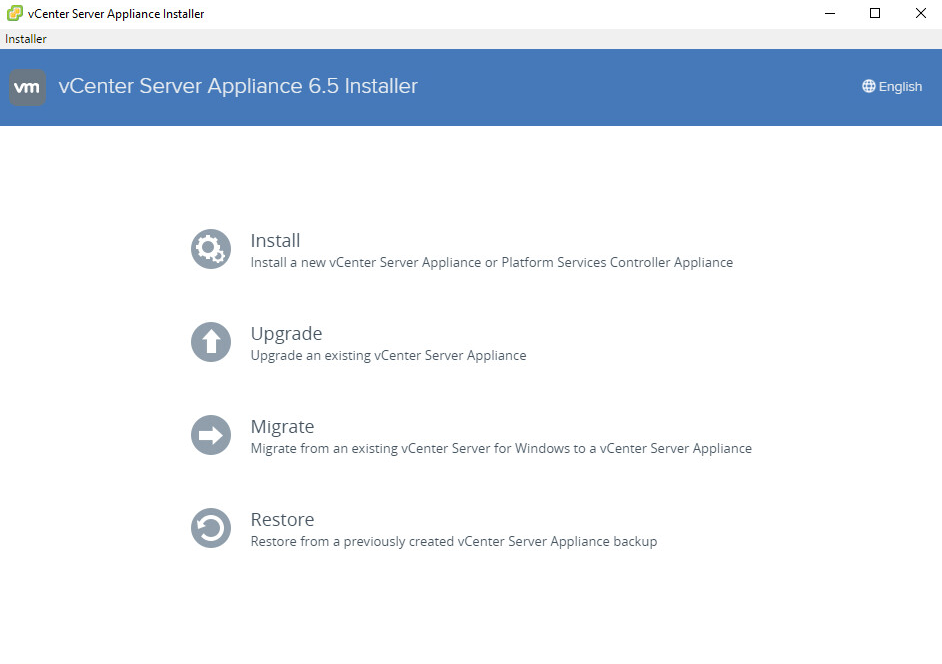
The installation is split into 2 stages, we begin with deploying a new appliance. The second stage migrates all data and settings. Click Next.
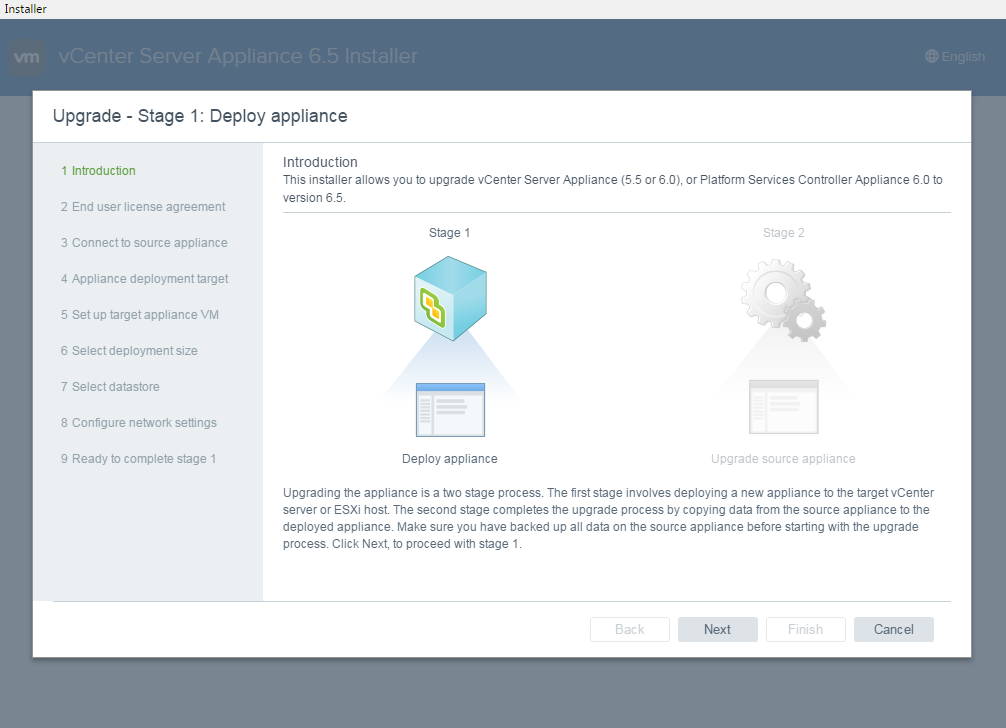
Accept the EULA and click Next.
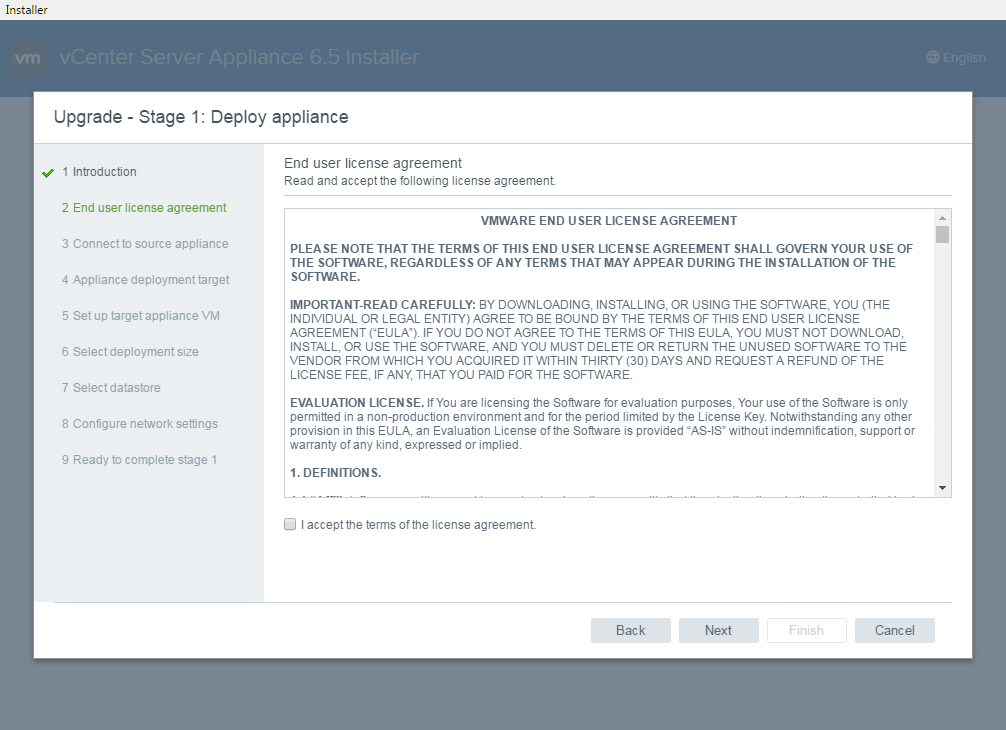
Enter the details for the existing vCenter Server Appliance and the host or vCenter it is managed by. Click Next.
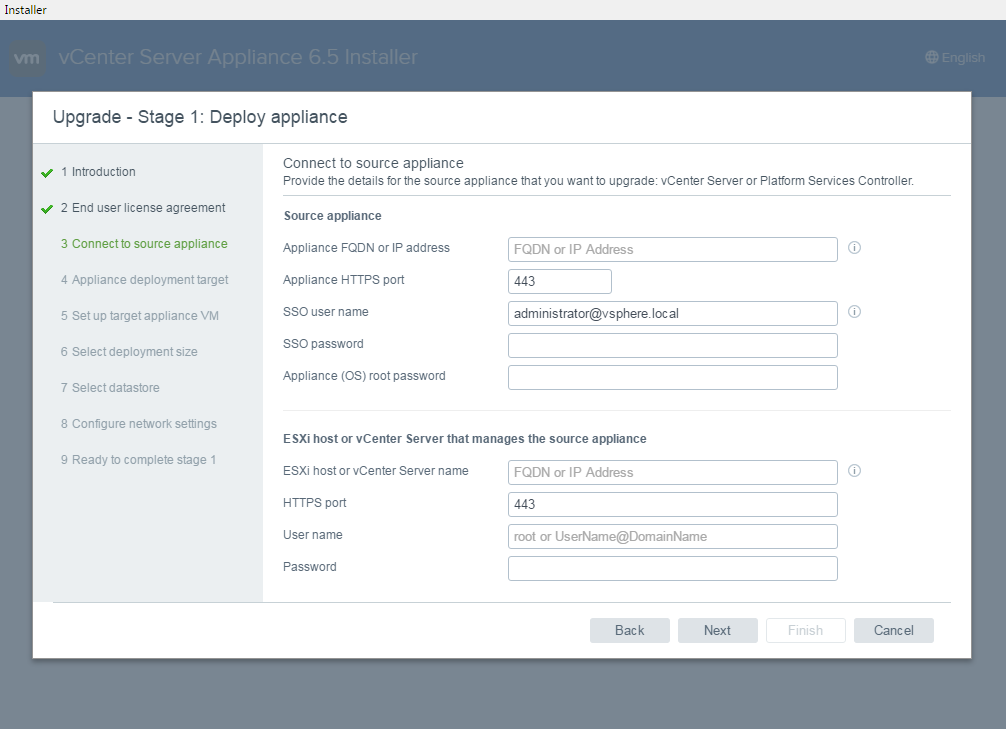
Enter the FQDN or IP address of the host, or vCenter upon which you wish to deploy the new VCSA, then click Next. The installer will validate access, if prompted with an untrusted SSL certificate message click Yes to continue. Tip – connect to the vCenter for visibility of any networks using a distributed switch, connecting to the host direct will only pull back networks using a standard switch.
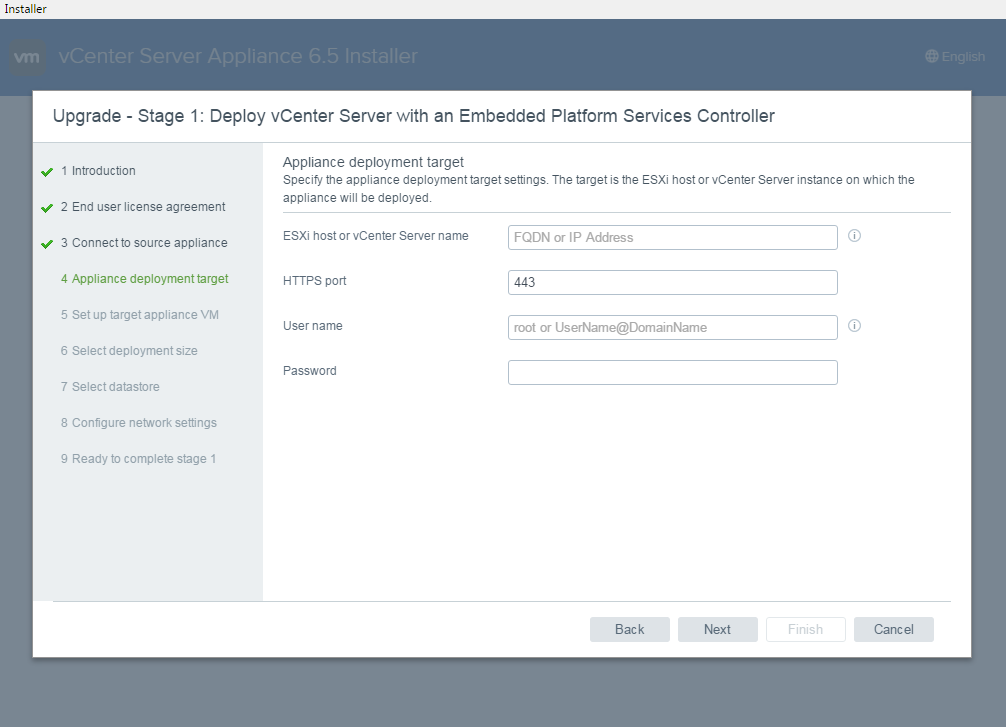
Enter a VM name and root password for the new appliance, and click Next.
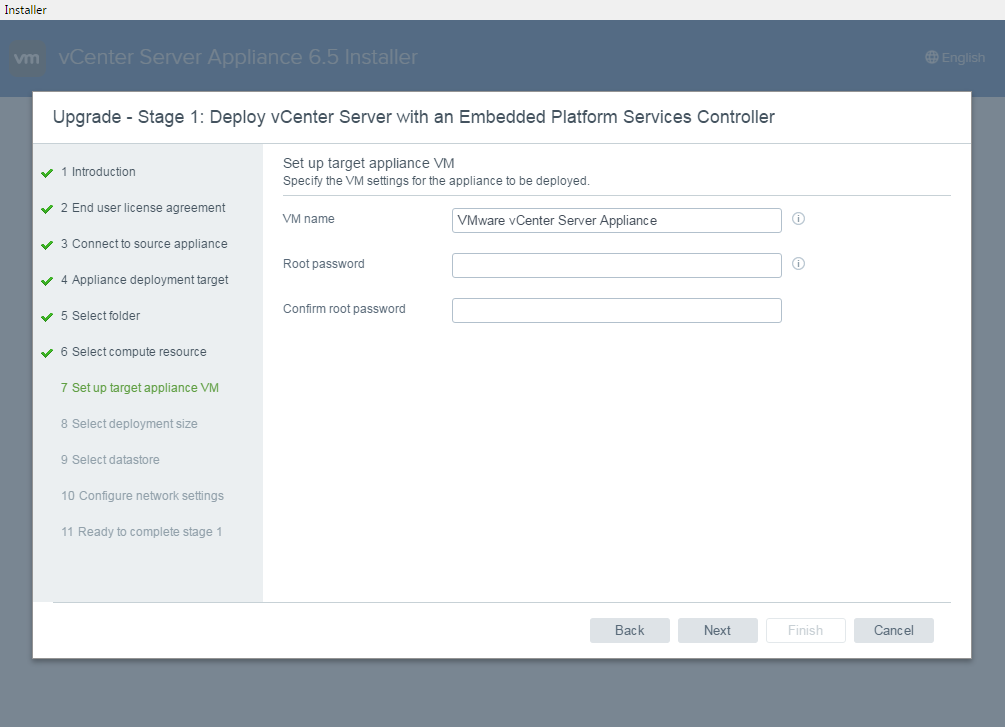
Configure the deployment size of the new appliance and click Next.
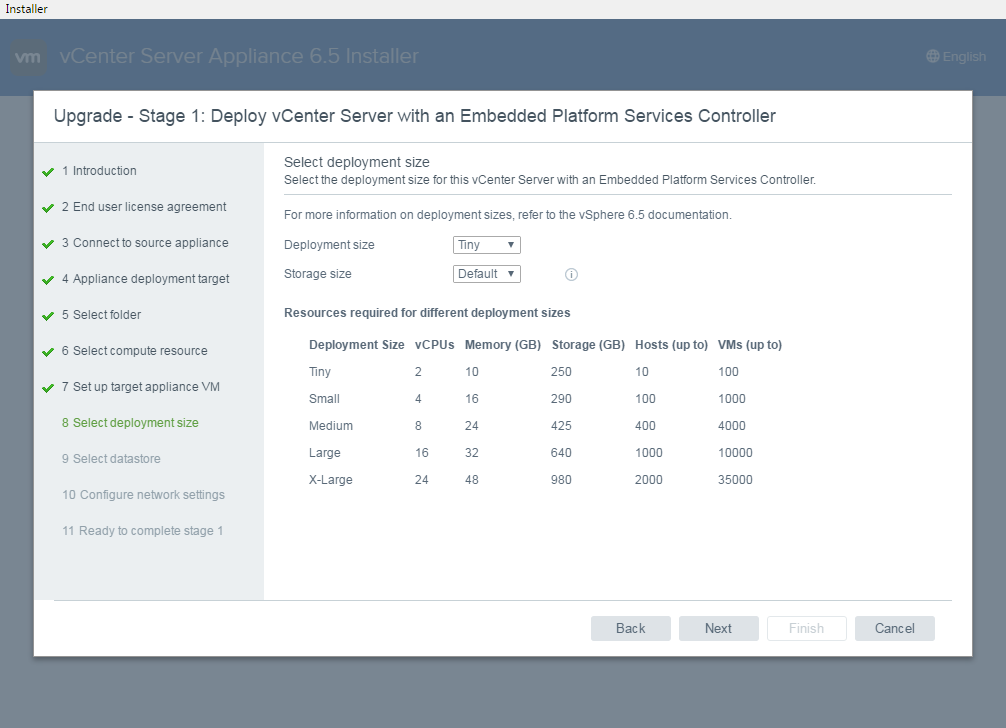
Select the datastore to locate the virtual appliance and click Next. Configure the temporary network settings for the appliance. These will only be used during migration of the data, once complete the temporary settings are discarded and the VCSA assumes the identity, including IP settings, of the old appliance. Click Next.
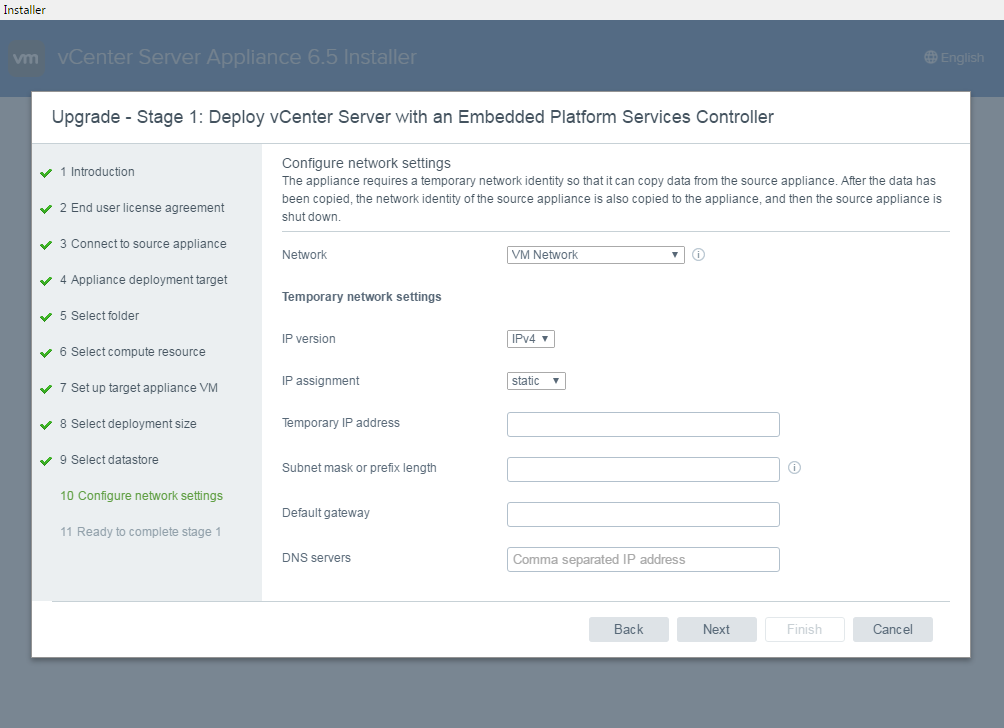
The new VCSA will now be deployed, once complete click Finish.
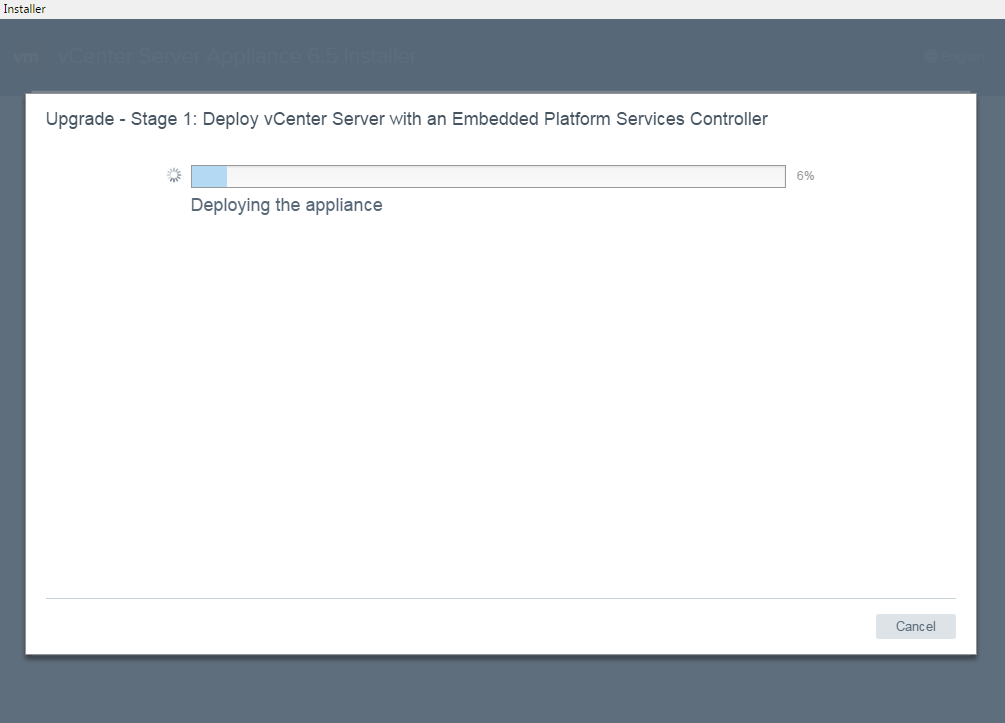
Stage 2 migrates data and identity across to the new VCSA, click Next.
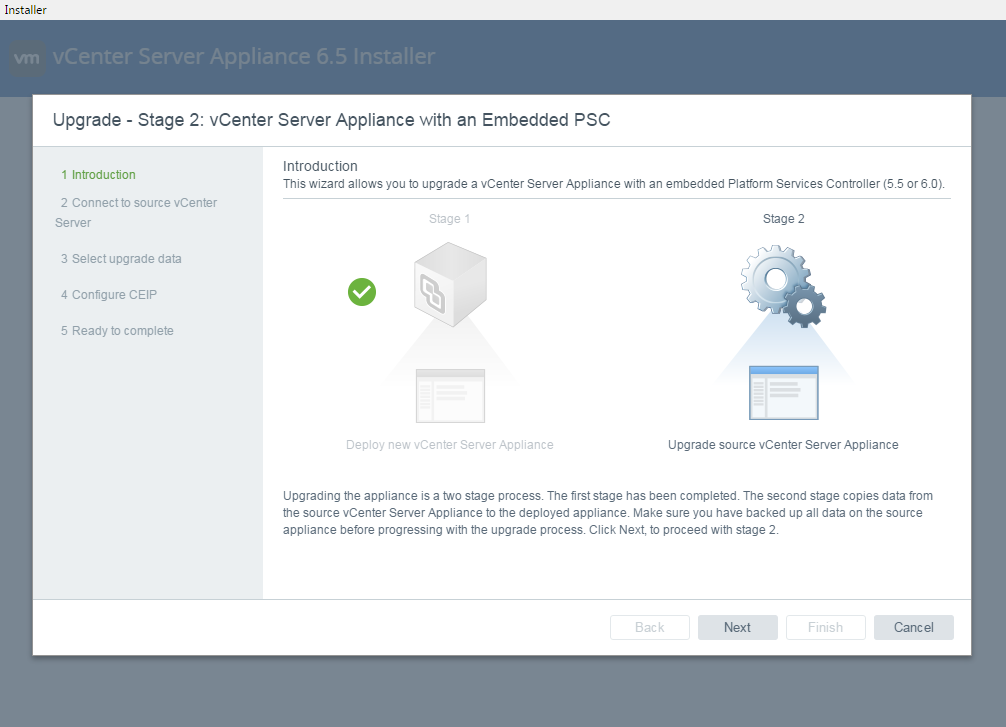
Select the data to migrate and click Next.
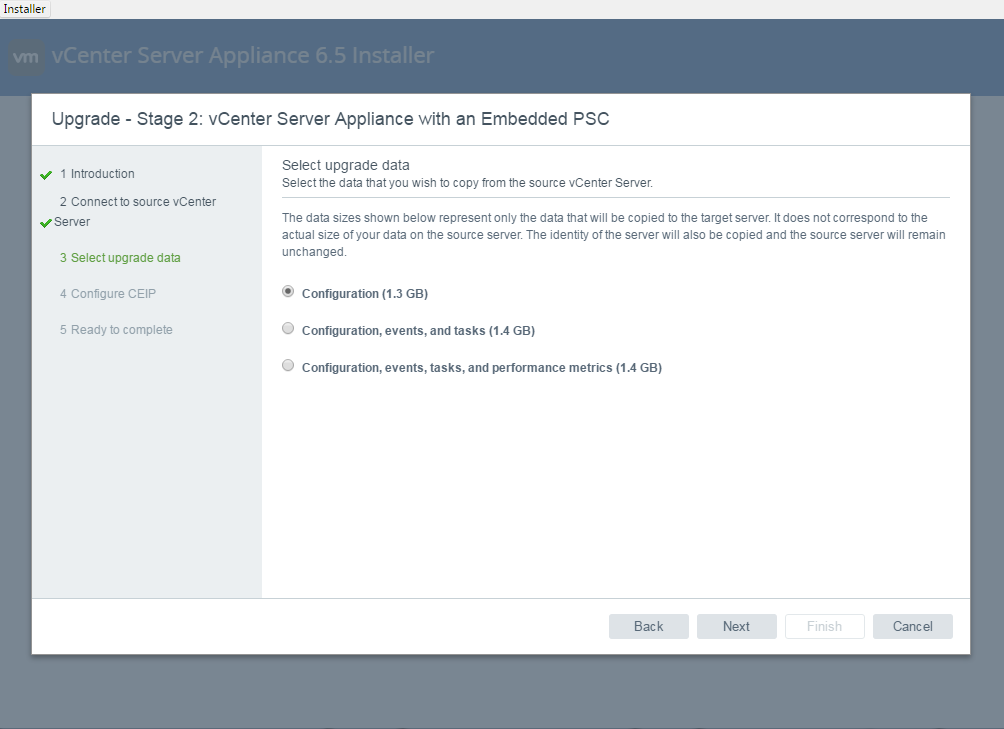
Select whether or not to join the VMware Customer Experience Improvement Program and click Next.
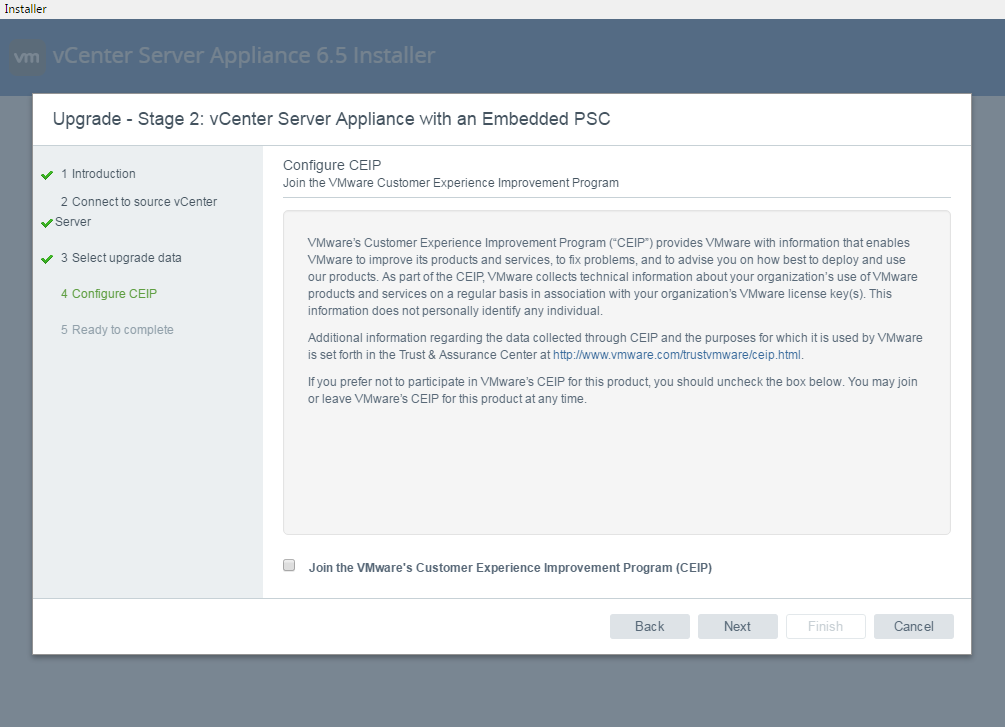
Review the summary page, confirm you have taken a backup of the vCenter and click Finish.Click OK to the shut down warning.
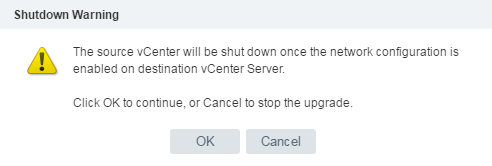
Data will now be migrated to the new VCSA, once complete the old VCSA will be powered off and the network settings transferred.
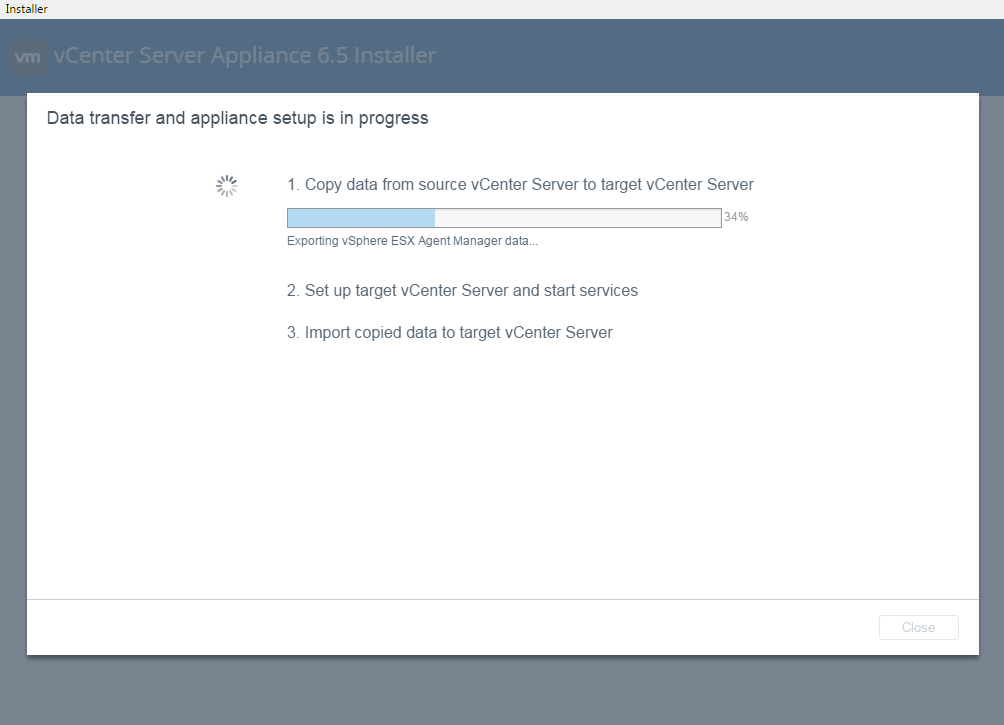
When finished click Close, the vCenter upgrade is complete.
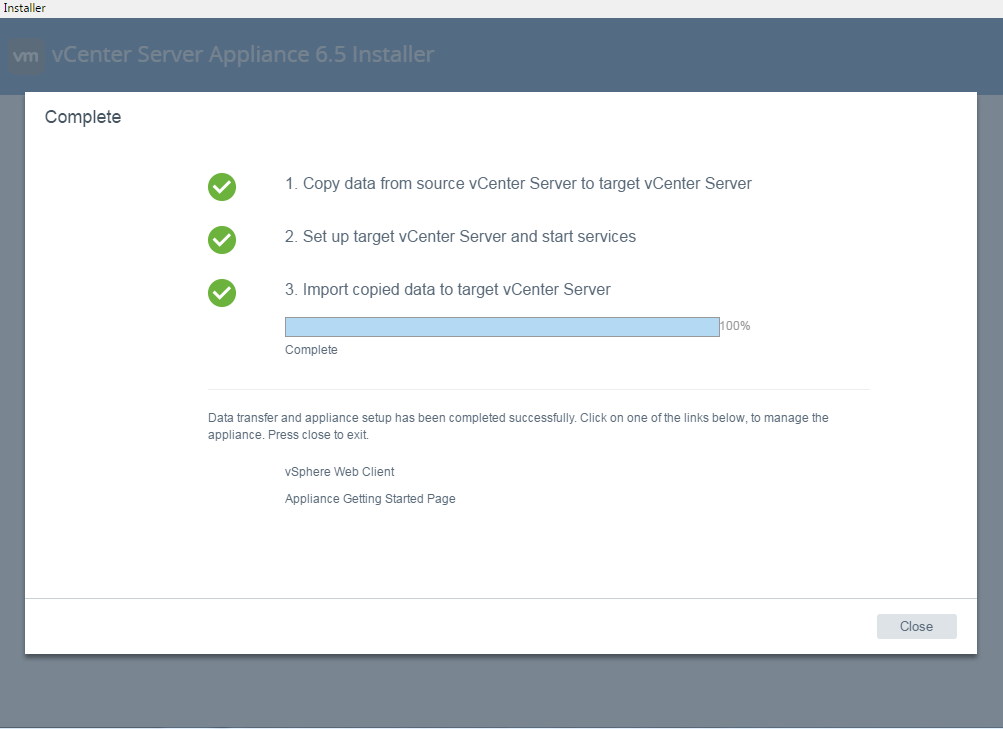
Post-Installation
Connect to the vCenter post install using the IP or FQDN of the vCenter. Access vSphere by clicking either the vSphere Web Client (Flash) or the vSphere Client (HTML5). Connect to the vSphere Web Client to manage your system, the thick client (Windows) is no longer supported.
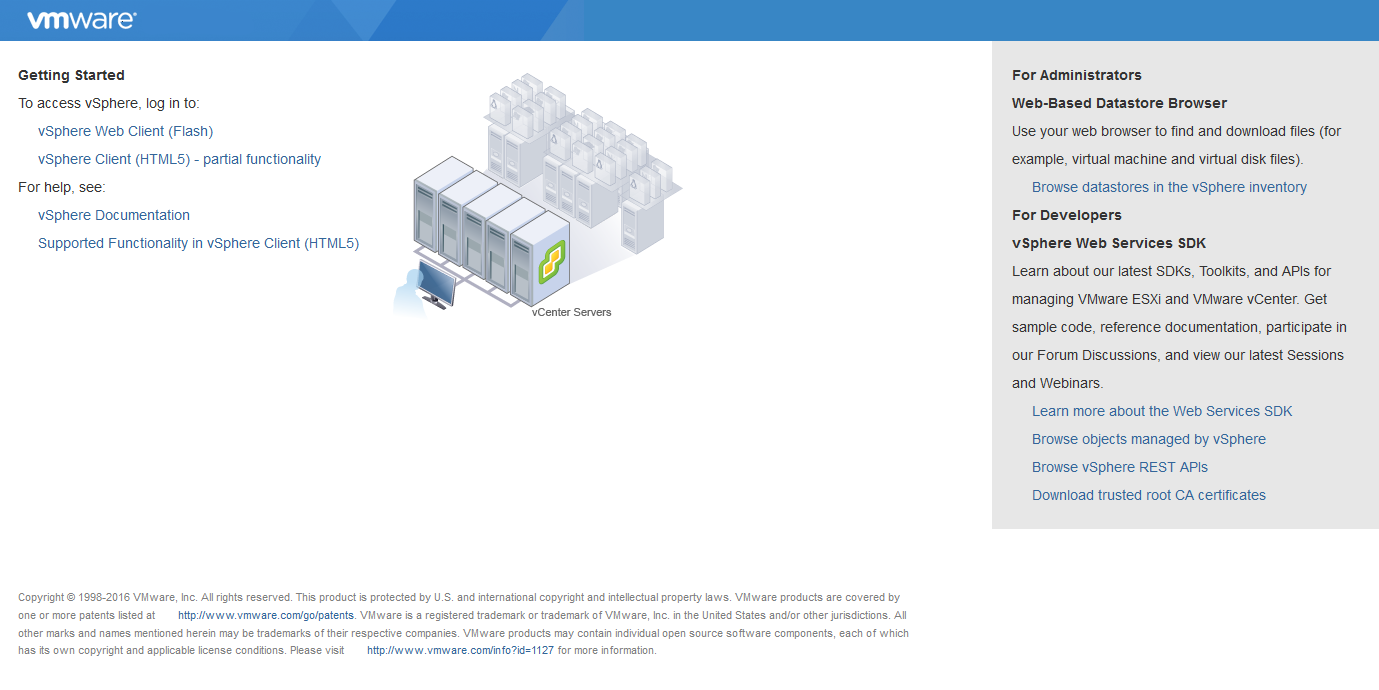
Log in to the vSphere Web Client using the SSO administrator login. Verify the installed version is correct under the Summary tab when selecting the vCenter, you can also go to Help > About.
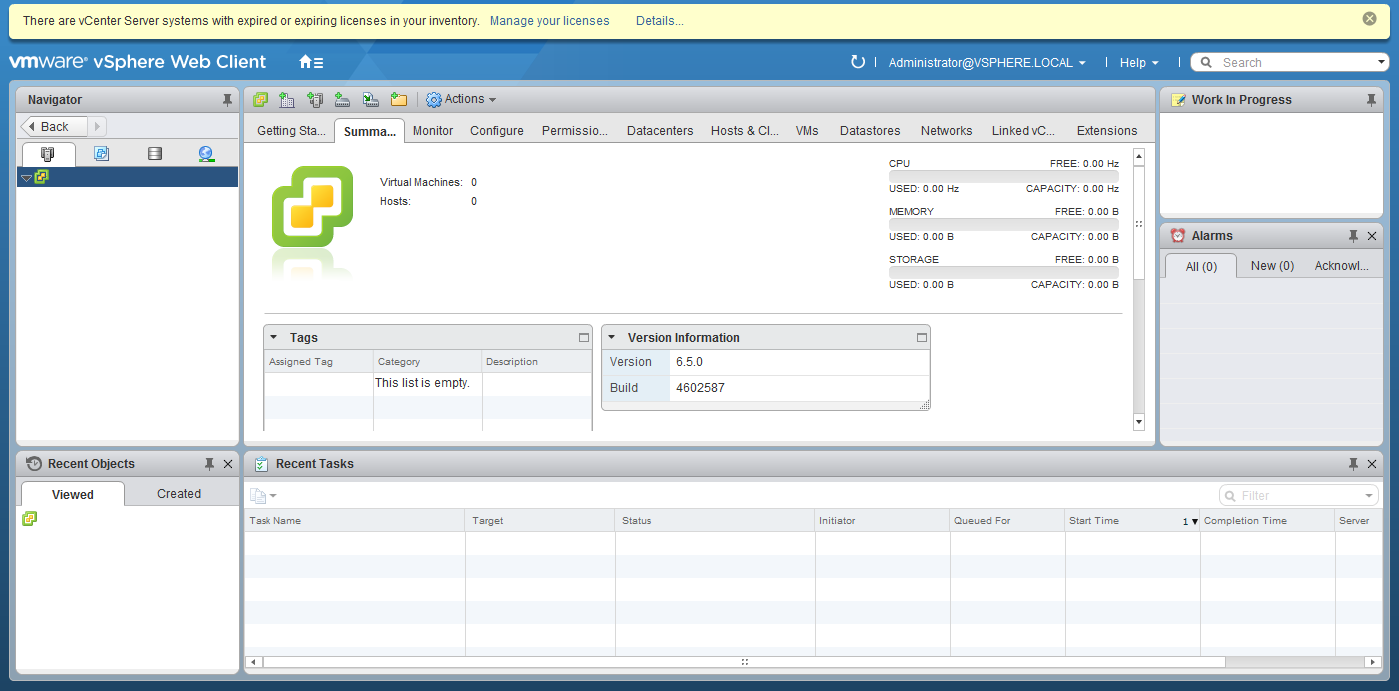
You must apply a new vCenter license key within 60 days. From the Hosts and Clusters view select the vCenter Server. Click Actions and Assign License. Select a license or use the green plus button to add a new license and click Ok.
You can obtain a 60 day trial license for vCenter Server here. If you have purchased vCenter Server then log into your licensing portal here. If the license key does not appear then check with your VMware account manager.


2 thoughts on “vCenter Appliance 6.5 Upgrade”